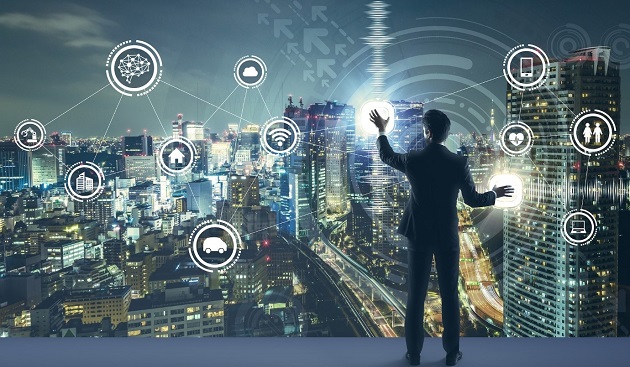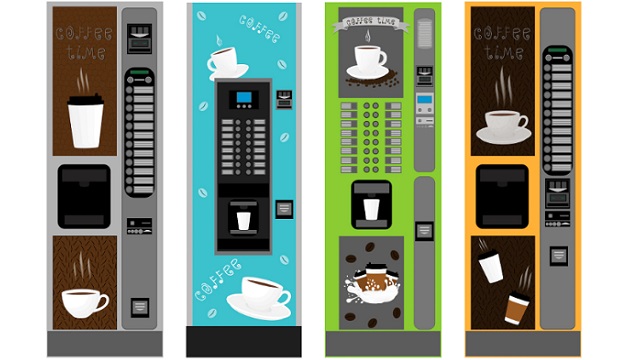The Internet of Things (IoT) brings the value of information technologies to the physical world. Through the addition of sensors and actuators to computer networks, we can sense what is happening in the physical world, make those sensor readings available to software algorithms, compute results based upon the readings, and finally drive actuators to use those computations to effect changes back in the physical world. Often, these networks are closed loop, meaning that the physical parameter that an actuator controls is immediately read back into the system by a sensor, closing a continuous real-time loop, and allowing monitoring and tight control of physical processes.
IoT Actuators and Sensors
IoT adds actuators to computer networks, and the control of the physical world they provide adds layers of complication to IoT applications. In the past, system problems like software errors, computer security breaches, or component failures could cause significant concern to IT managers because their data could be corrupted, lost, or stolen. When actuators are added to the network—especially if those actuators control powerful or dangerous systems like locomotives, reactors, substations, vehicles, or medical devices—if systems are hacked or suffer failures, serious property damage, personal injury, or even death can result. Therefore, we need to be especially careful with things like system integrity and security if actuators are included.
Most sensors and actuators include types of transducers. Transducers are devices that convert one form of energy to another. For example, the breaks in your car convert mechanical energy to heat energy. For IoT systems, nearly all sensors take some physical parameter and turn it into electrical signals. Similarly, nearly all actuators in IoT systems take electrical signals and convert them into some sort of physical output. The physical parameters used in IoT systems run all over your physics textbook. These could include electrical (voltage, current, power, resistance, capacitance, inductance, frequency, phase, etc.), mechanical (position, speed, acceleration, weight, compass heading, gravity, force, tension, pressure, flow, torque, magnetic field, etc.), acoustic (sound, vibration, seismic, etc.), image (light intensity, cameras, displays, infrared (IR), Light Detection and Ranging (LiDAR, etc.), chemical (potential hydrogen (pH)concentrations, composition, purity, etc.), medical (heart rate, respiration, blood pressure, temperature, electroencephalogram (EEG), etc.) and many more. Literally thousands of types of sensors exist for all these physical parameters, and for most parameters that can be sensed, and analogous actuator exists to modify that parameter in the physical world.
Sensors typically include a raw sensing element or transducer, and a signal processing chain to make the raw readings available to networked computers. Often, the raw sensing element—something like a thermistor, accelerometer, microphone, or light sensor—produces a modest analog signal. This signal must then pass through a signal processing chain that amplifies, filters, and converts the raw signal to a format our control computers and their software can input. This usually involves analog-to-digital conversion and some sort of computer interface like I²C or USB. Sophisticated sensors use digital signal processing techniques to further filter, condition, average, and format the sensor readings in the digital domain.
Actuators have inverse functions. Digital output from the control computers and their software are delivered through an interface to drivers that take the signals and convert them to whatever inputs the transducer in the actuator requires. Often, this consists of a digital-to-analog-converter, an output filter, and some sort of amplifier. Increasingly, digital techniques like digital signal processors (DSPs) and class-D amplifiers are being employed in actuators to make them more accurate, responsive, and energy-efficient.
Example of Using Actuators and Sensors for Simple IoT Functions Such as Brewing a Cup of Tea
Often, the number and diversity of sensors and actuators in networks are unexpectedly high. Stop for a minute and consider your smartphone and all the sensor and actuator types it includes. To better illustrate this point, let’s consider a robot system to brew cups of tea. On Star Trek the Next Generation, Captain Pickard would approach his food replicator and say “Tea, Earl Gray, Hot” and in a couple of seconds, it was served. While the transducers needed to materialize a tasty beverage in seconds from pure energy may not exist, at least not yet, let’s consider a practical system that can perform a similar function, and look at all the sensors and actuators a fully realized version could contain:
The first step in this process is to accept the user’s request. Ordering could be via a keypad array (simple push-button sensors), a capacitive touchpad (capacitance sensors), a microphone array (sound sensors), or a camera looking for gestures (image sensors). The orders could also arrive via a computer network using connection types that could include fiber (optical sensors), wireless (RF sensors), or wired (electrical sensors). A local processor accepts this input and coordinates the sensors and actuators in the machine as a real-time control system. If this is a vending machine, additional sensors and actuators accept the currency or credit cards and verify they are genuine (Figure 1).
Figure 1: Image of a beverage brewing machine. (Source: Mouser)
Sensors continuously monitor the temperature and pressure of the brewing water in the reservoir. A resistance heater serves as the actuator that controls the water temperature. If there is a cold water reservoir for cold brew beverages, it has its own temperature and pressure sensors, and perhaps a Peltier module as an actuator to provide thermo-electric cooling. There are feedback loops from the sensors, through the control processor and to the actuators to ensure the water is at the desired temperature for optimal brewing.
Next, we have to select a tea bag. Our machine may have a magazine of tea bags of different types that represent the varieties it can brew. Sensors confirm the presence of the bags—perhaps optically or mechanically. Robot actuators use motors to index the magazine to the right position and lower the selected tea bag into the brew station. Another robot actuator could move the cup into the brew station, and sensors confirm it is positioned correctly.
Now, valve actuators open to let the water into the brew station. Ultrasonic level sensors measure how full the cup is, and cut off the valves at the right moment. Thermal sensors monitor the temperature of the tea as it brews. The motors that lowered the tea bag can gently dip it up and down to facilitate even brewing. An optical sensor can measure the color of the tea to remove the tea bag when the desired strength is achieved. An actuator, like a solenoid, can drop the spent tea bag into the waste receiver.
Additional actuators could add the selected condiments, for example a motor-driven auger to meter sugar or creamer, or a valve to dispense honey. Optical, weight, or ultrasonic sensors in the condiment bins verify the supply is adequate and the dispensers are metering correctly. A little robotic spoon—requiring several motor-driven actuators to position, move, and clean it—gives a final stir and motor actuators open the delivery door and present the cup to the user.
So, using IoT techniques to automate something as simple as brewing a cup of tea may take several dozen sensors and actuators, their interface circuits, a fairly sophisticated processor, and lots of software. I’m not sure making such a machine would be worth it today, but as the capabilities of sensors and actuators continue to increase, and their costs continue to drop, the appearance of such systems is probable.
Key Points:
- Sensors and actuators are the defining elements of Internet of Things networks.
- Lots of electronics are required to amplify, condition, and interface the signals from the raw transducers to the control processors.
- A surprisingly large number of diverse sensor and actuator types are required to perform even simple IoT functions, even brewing a cup of tea.
About the Author
Charles C. Byers is Associate Chief Technology Officer of the Industrial Internet Consortium, now incorporating OpenFog. He works on the architecture and implementation of edge-fog computing systems, common platforms, media processing systems, and the Internet of Things. Previously, he was a Principal Engineer and Platform Architect with Cisco, and a Bell Labs Fellow at Alcatel-Lucent. During his three decades in the telecommunications networking industry, he has made significant contributions in areas including voice switching, broadband access, converged networks, VoIP, multimedia, video, modular platforms, edge-fog computing and IoT. He has also been a leader in several standards bodies, including serving as CTO for the Industrial Internet Consortium and OpenFog Consortium, and was a founding member of PICMG’s AdvancedTCA, AdvancedMC, and MicroTCA subcommittees.










